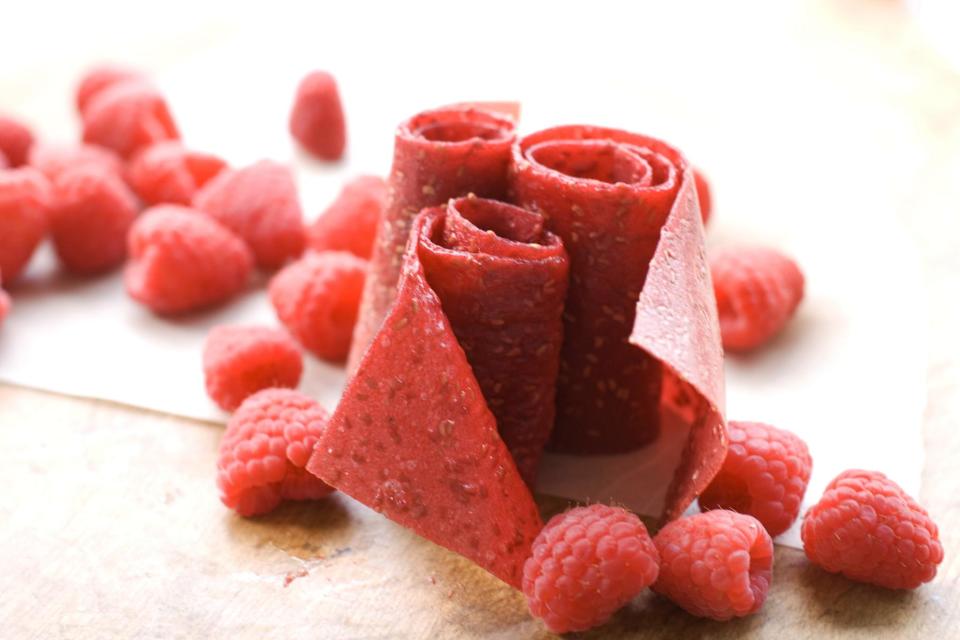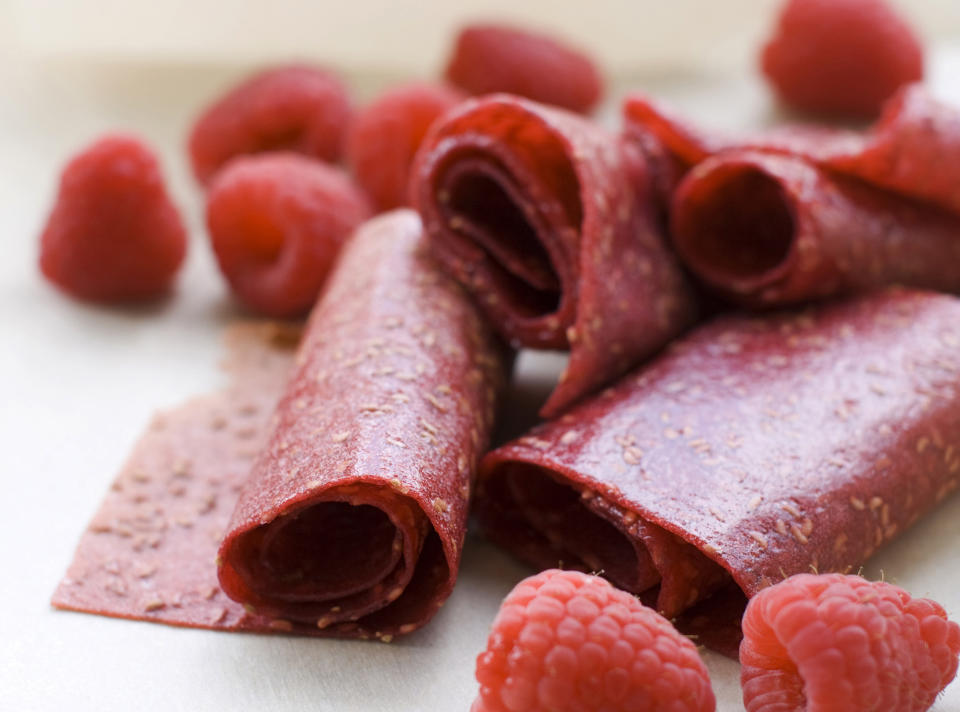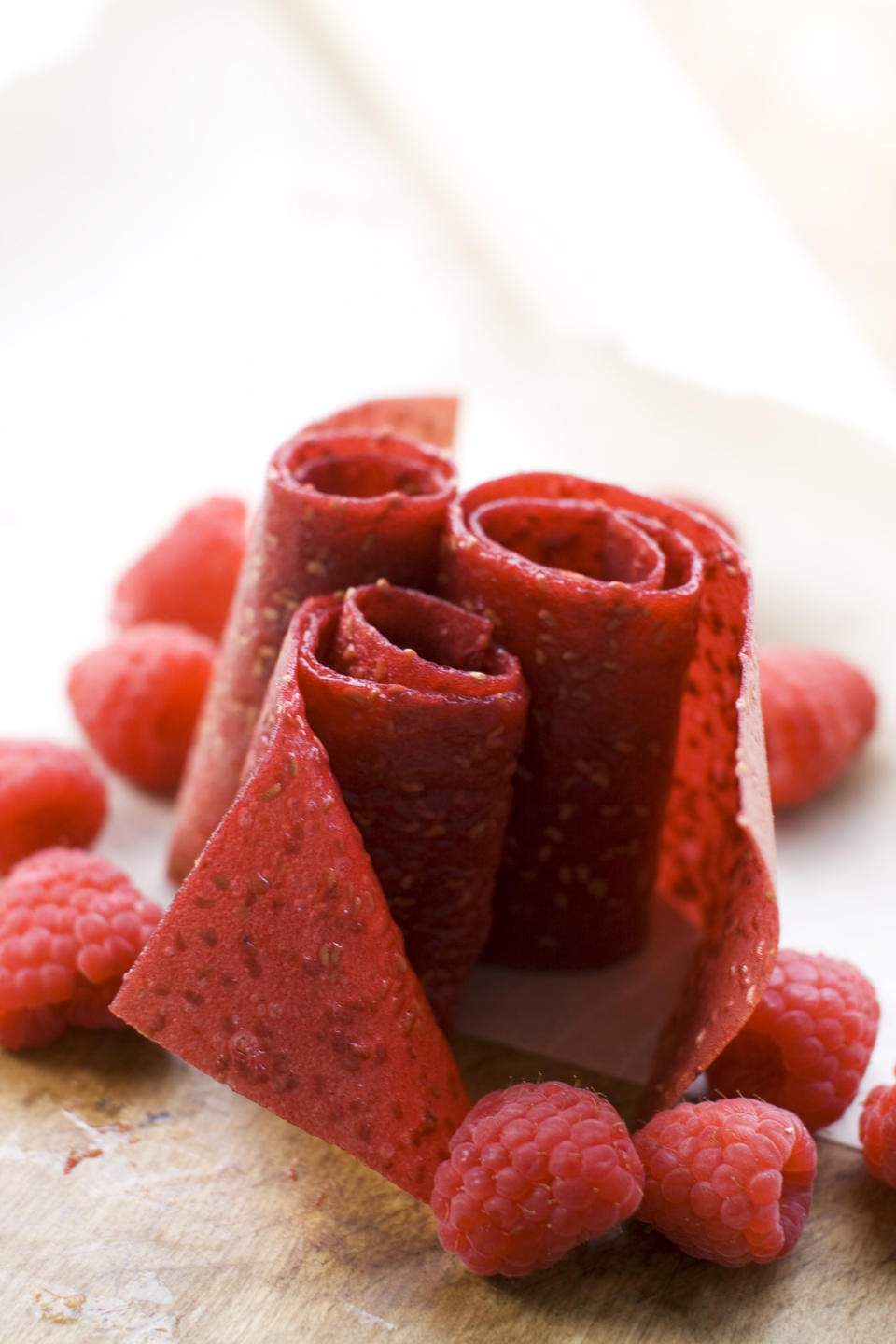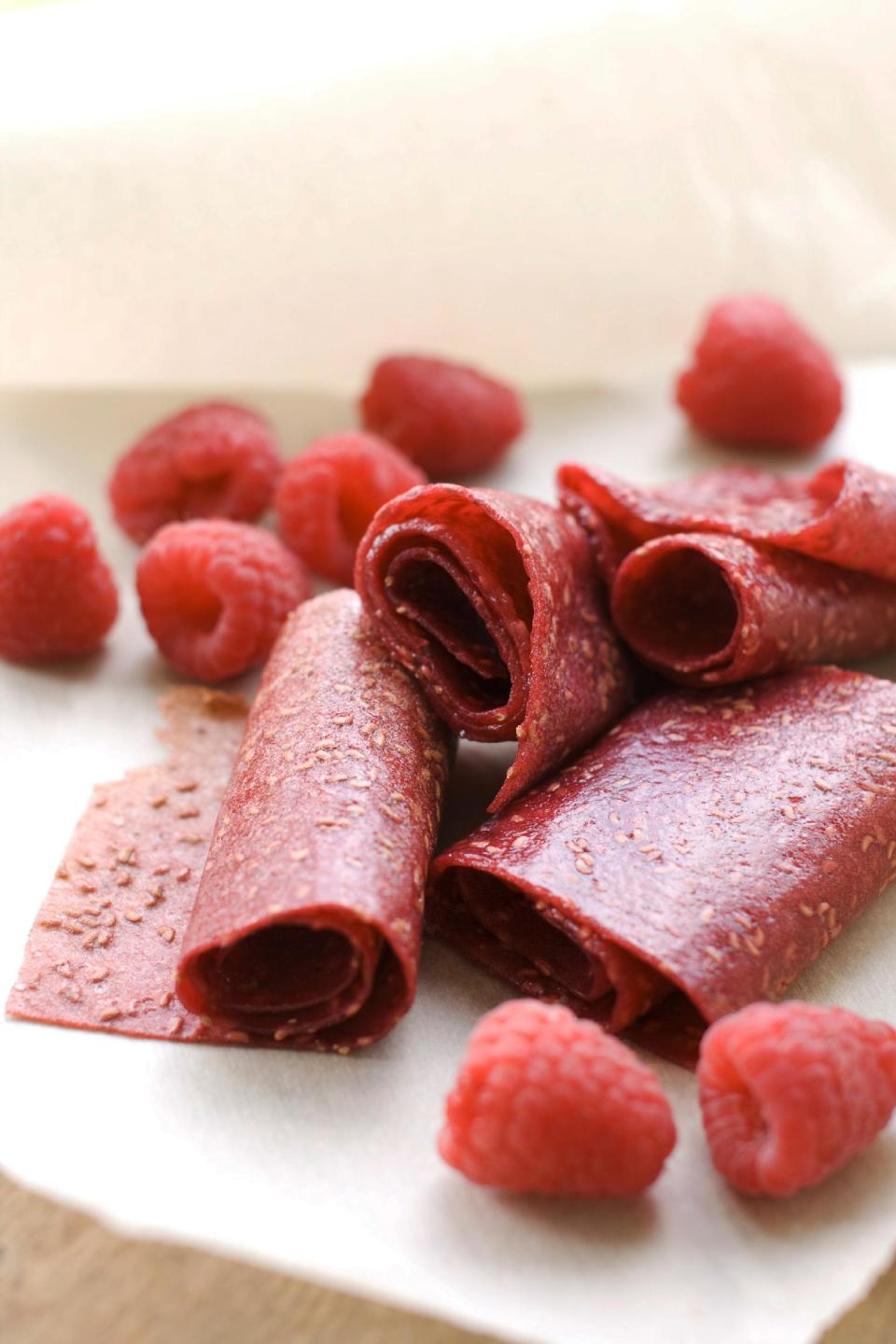Fruit and veg leathers: Easy and not just for kids
What does a schoolchild's packed lunch have in common with a $300-a-head meal at a three-Michelin-star restaurant? These days, both frequently include an edible leather: a puree of fruit (or, in the case of the restaurant, more often of a vegetable, such as tomato or onion) spread thin and dehydrated until it becomes stretchy.
Commercial fruit leathers roll out of factories by the yard, and those served at high-priced restaurants are prepared by expert chefs, so you might think that such a modern creation is beyond the means of the home cook. But it's actually amazingly quick and easy to make an all-natural fruit leather that is a tasty, healthful and highly portable snack for the lunch box or backpack. My 10-year-old loves the mango chili leather.
And you can use the same technique to create savory vegetable leathers that add interesting, modern touches to traditional dishes. At The Cooking Lab, for example, we put tomato leather on lobster rolls. A little tangle of thin onion leather strips makes a terrific garnish for gazpacho or vichyssoise; apple leather pairs nicely with squash soup.
All you need to make your own leather is a blender, an oven and about 20 minutes of prep time. Edible leathers do need one to three hours to dehydrate — the thicker the layer of puree, the longer it takes to dry — but you can do other things while they sit in the oven. For these recipes, timing is not critical.
There are just three prep steps: prepare the fruit or vegetable by coring, peeling and dicing it; puree all the ingredients in a blender to a smooth slurry; then spread the puree in a thin, even layer onto a silicone baking mat. An offset spatula is an ideal tool for that last step, but if you don't have one, you can instead wrap six to eight loops of masking tape around both ends of a ruler so that it leaves a gap of about 1/16 inch (2 mm) as you draw it across the mat.
Except for leathers made from fruits, like mango, which are naturally high in pectin, you'll need to add a smidgen of gelling agent to the puree to get the right degree of stretchiness to the leather. Pectin can work, but its gelling strength varies greatly depending on the acidity of the puree. Xanthan gum, which you can find in the baking ingredients aisle of bigger grocers, performs more consistently. Xanthan is a natural product fermented from sugars. It is powerful stuff, so measure it carefully; use a digital scale if you have one.
___
SWEET RASPBERRY LEATHER
Start to finish: 2 hours
Servings: 4
2 cups (300 grams) raspberries
1 tablespoon (12 milliliters) cooking oil
1/4 cup (45 grams) sugar
0.6 grams (3/16 teaspoon) xanthan gum
Arrange an 11-by-17-inch nonstick silicone mat on a rimmed baking sheet. Heat a food dehydrator to 150 F, or set your oven to its lowest temperature.
Combine all ingredients in a blender, then puree until thoroughly blended, at least 30 seconds. Working quickly, pour the puree onto the mat and use an offset spatula or other long, flat utensil to spread it into an even layer 1/16 inch thick. If the puree sits too long in the blender it may set into a custard-like gel; if that happens, blend it again until it becomes fluid enough that you can spread it easily across the mat.
Place the baking sheet in the dehydrator or oven, and dry until leathery and tacky to the touch. A drying time of 1-1/2 to 2 hours is typical, but the time required can vary considerably depending on the thickness and wetness of the puree layer, the temperature of the chamber, and the humidity of the air. Use the convection setting on your oven if one is available.
When the leather is done, peel it gently from the mat, and use scissors to trim it to individual serving sizes; for use as a garnish, cut it into long, thin strips. To store the leather pieces, roll them individually in waxed paper and then in plastic wrap. The leather will keep for a week when packaged this way.
___
MANGO CHILI LEATHER
Start to finish: 2 hours
Servings: 4
2 cups (300 grams) peeled and diced mango (about 1 medium mango)
1 tablespoon (12 milliliters) cooking oil
1 1/4 teaspoons (6 grams) sugar
1 1/2 teaspoons (3 grams) minced red Thai chili or red jalapeno
Arrange an 11-by-17-inch nonstick silicone mat on a rimmed baking sheet. Heat a food dehydrator to 150 F, or set your oven to its lowest temperature.
Combine all ingredients in a blender, then puree until thoroughly blended, at least 30 seconds. Working quickly, pour the puree onto the mat and use an offset spatula or other long, flat utensil to spread it into an even layer 1/16 inch thick. If the puree sits too long in the blender it may set into a custard-like gel; if that happens, blend it again until it becomes fluid enough that you can spread it easily across the mat.
Place the baking sheet in the dehydrator or oven, and dry until leathery and tacky to the touch. A drying time of 1-1/2 to 2 hours is typical, but the time required can vary considerably depending on the thickness and wetness of the puree layer, the temperature of the chamber, and the humidity of the air. Use the convection setting on your oven if one is available.
When the leather is done, peel it gently from the mat, and use scissors to trim it to individual serving sizes; for use as a garnish, cut it into long, thin strips. To store the leather pieces, roll them individually in waxed paper and then in plastic wrap. The leather will keep for a week when packaged this way.
___
OTHER FRUIT LEATHERS
Follow the directions above, but substitute 2 cups (300 grams) cored, peeled and diced persimmons, apples, pears or apricots for the raspberries, and reduce the amount of sugar to 2 1/2 tablespoons (30 grams). Use more sugar if you or your kids prefer sweeter snacks.
___
TOMATO LEATHER
Start to finish: 2 hours
Servings: 4
1 1/8 cups (300 grams) tomato paste
3 3/8 teaspoons (18 milliliters) extra-virgin olive oil
4 1/4 teaspoons (21 milliliters) red wine vinegar
6 drops hot sauce
3/16 teaspoon (0.6 grams) xanthan gum
Arrange an 11-by-17-inch nonstick silicone mat on a rimmed baking sheet. Heat a food dehydrator to 150 F, or set your oven to its lowest temperature.
Combine all ingredients in a blender, then puree until thoroughly blended, at least 30 seconds. Working quickly, pour the puree onto the mat and use an offset spatula or other long, flat utensil to spread it into an even layer 1/16 inch thick. If the puree sits too long in the blender it may set into a custard-like gel; if that happens, blend it again until it becomes fluid enough that you can spread it easily across the mat.
Place the baking sheet in the dehydrator or oven, and dry until leathery and tacky to the touch. A drying time of 1-1/2 to 2 hours is typical, but the time required can vary considerably depending on the thickness and wetness of the puree layer, the temperature of the chamber, and the humidity of the air. Use the convection setting on your oven if one is available.
When the leather is done, peel it gently from the mat, and use scissors to trim it to individual serving sizes; for use as a garnish, cut it into long, thin strips. To store the leather pieces, roll them individually in waxed paper and then in plastic wrap. The leather will keep for a week when packaged this way.
___
ONION LEATHER
Follow the recipe above for tomato leather, but substitute 1 1/8 cups (300 grams) pureed cooked onion or shallot for the tomato paste, and substitute cooking oil for the olive oil.
___
EDITOR'S NOTE: W. Wayt Gibbs is editor-in-chief of The Cooking Lab, the culinary research team led by Nathan Myhrvold that produced the cookbooks "Modernist Cuisine: The Art and Science of Cooking" and "Modernist Cuisine at Home." Their latest book, "The Photography of Modernist Cuisine," will be released in October.




